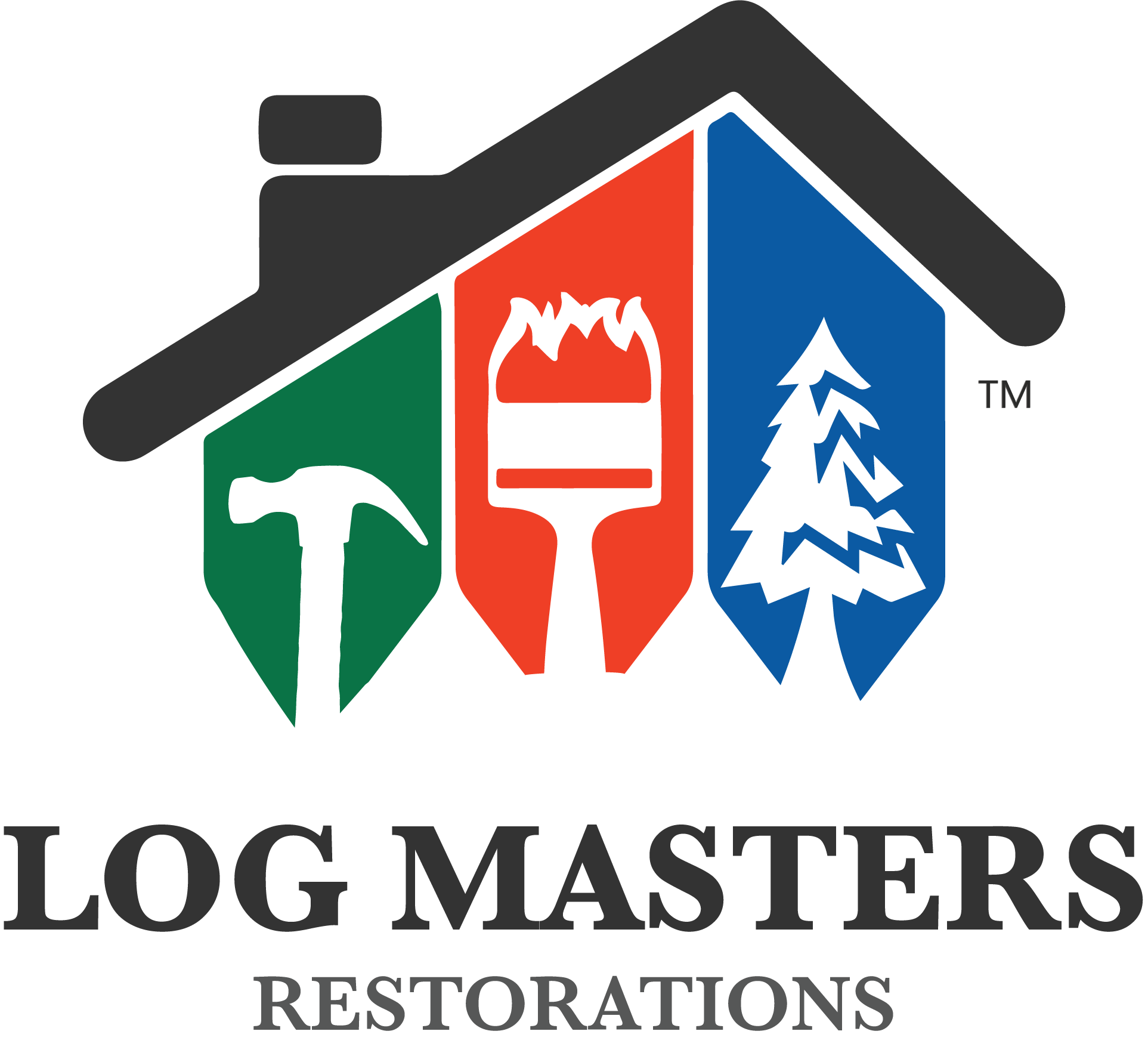Your log home’s wood defines its look, strength, and upkeep. Each type brings its own grain, tone, and texture, along with different levels of durability against moisture and pests.
At Log Masters Restorations, we’ve worked on log homes made from nearly every type of timber across the country. Some hold up beautifully for generations, while others need more regular care to prevent damage. Knowing which type of wood you have — or plan to use — helps you adequately protect your investment.
Why Wood Species Matter
Wood isn’t just wood. Some types expand more in humidity. Others naturally fight off rot or insects. The density, grain, and moisture content of your logs all affect how your home weathers and how often it needs restoration.
Hardwoods like oak can resist impact and decay, but may be expensive and heavy. Softer woods, like pine, are easier to work with but require more frequent sealing to stay protected. Understanding these differences helps you select products, stains, and maintenance schedules that cater to your home’s specific needs.
What Makes a Good Log Home Wood
Three main qualities determine whether a wood species is ideal for log construction:
1. Durability and Density
Tough woods like oak and cedar stand up well to stress. They dry evenly, which helps prevent cracking and wide gaps between logs. Today, many builders use cedar for its durability, as oak can often be difficult to repair and restore when damage occurs.
2. Natural Resistance
Some woods have natural oils or resins that fight off insects and decay. Cedar is one of the best, while pine needs added protection through treatment or regular staining.
3. Moisture Stability
Logs constantly adjust to the environment. Woods that stay stable in changing humidity — such as Douglas Fir — are less likely to twist or warp over time. These spiral grain logs (pine, spruce, fir, and cedar) behave differently depending on how that grain develops.
Young trees typically start with a left-hand spiral, but as they mature, many switch direction. Logs with a right-hand spiral — where the inner core spirals opposite the outer grain — are generally stronger because moisture can’t travel deeply into the wood. Left-hand spiral logs, which never change direction, tend to be weaker and more prone to twisting. Because of this, LH logs aren’t ideal for structural elements like purlins, joists, or ridge beams.
At Log Masters, we also consider how your home’s location influences these traits. A wood that performs well in Colorado’s dry climate may behave differently in the humid South.
The Most Popular Woods for Log Homes
Let’s look at the wood species most often used in log home construction, along with their unique benefits and challenges.
Pine
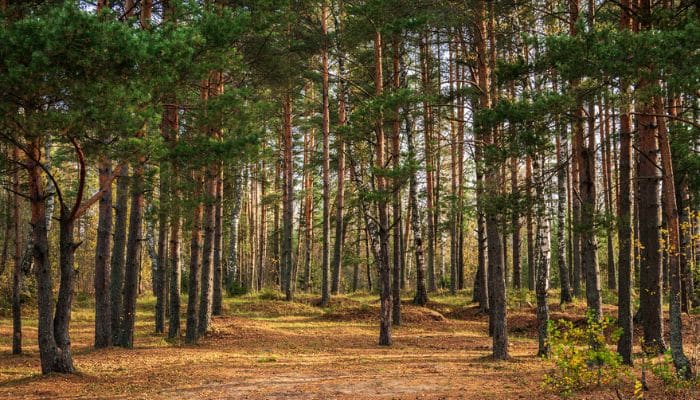
Pine is the most common wood used in log homes. It’s affordable, easy to find, and simple to work with. Builders choose it for its solid mix of strength, light weight, and classic look.
Pine can be either white or yellow. White pine is naturally pale, so staining is straightforward. Yellow pine carries a golden tint that will influence how a stain looks once applied, which is why selecting the right product is essential for achieving the finish you want.
The downside is that pine absorbs moisture more easily than hardwoods. Without consistent staining and sealing, it can swell, warp, or develop rot. Yellow pine is one of the stronger varieties, known for its better resistance to decay.
Maintenance Tip: Wash pine logs annually to remove pollen and mildew, and restain every three to five years to protect against sun and water damage.
Cedar
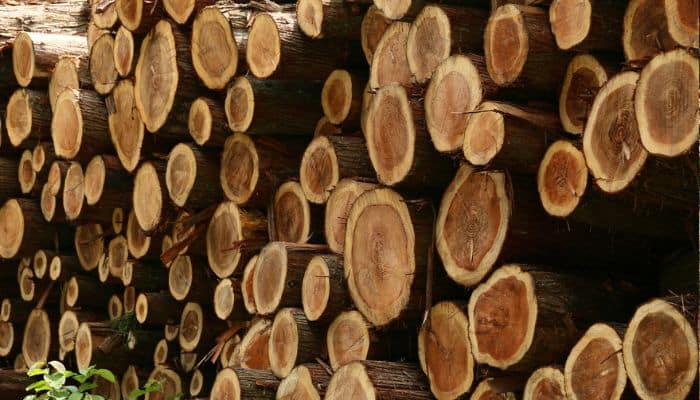
Cedar is a favorite among log homeowners for good reason. It’s naturally resistant to insects, fungus, and decay thanks to the protective oils within the wood. Its rich color and distinct aroma make it a premium choice for cabins and custom homes alike.
Cedar also performs exceptionally well when it comes to insulation. With a higher R-value than most other softwoods, it offers better thermal efficiency, helping your home stay warmer in winter and cooler in summer.
Its low shrink rate means less cracking and settling over time, and although it’s lighter than many comparable woods, it remains remarkably durable. The main drawback is cost — cedar can be significantly more expensive than pine or fir.
Maintenance Tip: Cedar still needs UV protection. A clear coat or tinted stain with a UV blocker will help prevent fading and keep its color warm and vibrant.
Oak
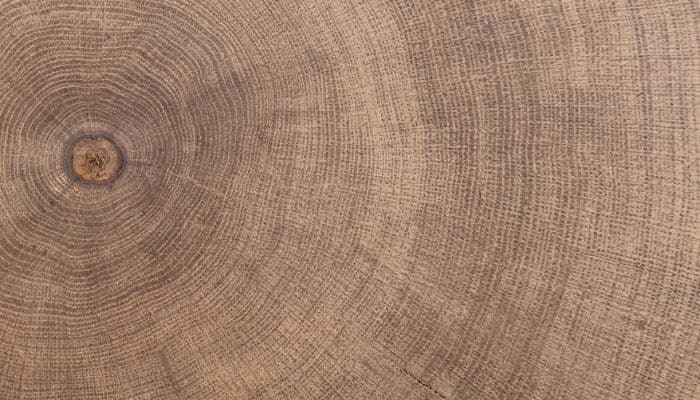
Oak is an authentic hardwood — dense, heavy, and incredibly strong. It’s often used for structural beams or heritage log homes built to last centuries. Its tight grain and natural tannins make it resistant to insects and rot. It is also more fire-resistant because it burns more slowly than softer woods.
Because oak holds moisture longer, it must be properly dried before construction. Kiln-drying reduces the risk of cracking or twisting once installed. Oak is also more expensive and harder to work with, but its longevity makes it a worthwhile investment for those who value durability.
Maintenance Tip: Inspect oak logs for small surface checks (also known as hairline cracks) after seasonal changes. Fill and seal them early to keep water out.
Douglas Fir
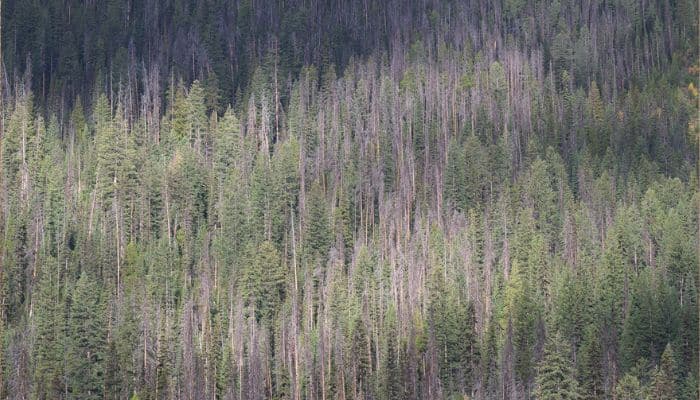
Douglas Fir offers a striking red-blond hue and is known for its excellent strength-to-weight ratio. It’s actually harder than cedar and generally more affordable, making it a practical choice for homeowners who want durability without the premium price tag. Fir also tends to have a straighter, more uniform grain, which gives log walls a clean, consistent appearance.
It’s one of the most stable softwoods, meaning it resists shrinking and warping as it dries. However, Douglas Fir isn’t naturally decay-resistant and should be protected with proper preservatives or high-quality stains. Its balance of beauty, strength, and value makes it especially popular in mountain and western-style homes where temperature swings are common.
Maintenance Tip: Keep Douglas Fir logs clean and reapply a breathable, oil-based stain every few years to protect against moisture intrusion.
Quick Comparison: Common Log Home Woods
| Wood Type | Durability | Resistance to Decay & Insects | Cost | Maintenance Needs |
| Pine | Moderate | Low–Moderate | $ | Frequent sealing, stain every 3–5 years |
| Cedar | High | High | $$$ | Low; UV protection recommended, High R-value |
| Oak | Very High | High | $$$$ | Medium; regular inspections needed |
| Douglas Fir | Higher than Cedar | Moderate | $$ | Medium; requires treated finish |
Note: All pricing is subject to location and availability.
The Importance of Proper Drying (EMC)
Before a log ever becomes part of your home, it must be dried to the right Equilibrium Moisture Content (EMC) — the balance between the wood’s internal moisture and the surrounding air.
Logs that are too wet shrink excessively as they dry, causing gaps, cracks, and structural shifts. Over-dried logs, on the other hand, can absorb moisture later and expand unevenly.
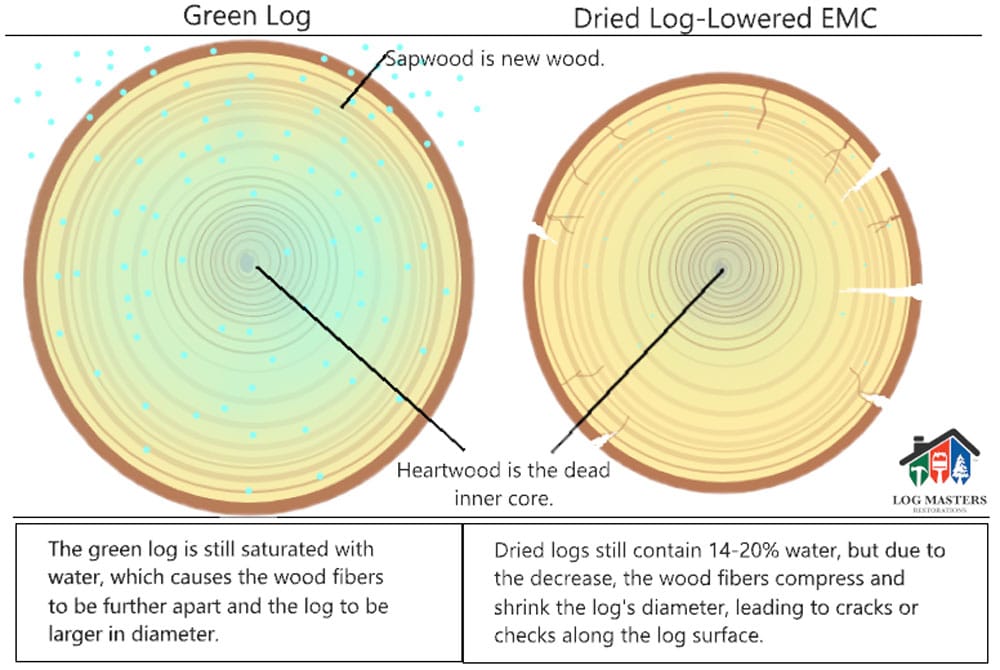
That’s why Log Masters sources from reputable suppliers who understand EMC. For example, Allpine Lumber in Alamosa, Colorado, dries logs in a high-desert climate that is perfect for naturally reducing moisture content. Properly cured logs mean fewer surprises and longer-lasting results once your home is built or restored.
Sustainable Sourcing and Responsible Forestry
Good logs start with responsible forestry. Companies like Hiawatha Log Homes in Michigan harvest from managed forests that have been replanted and maintained for decades.
At Log Masters Restorations, we share that commitment. Sustainability isn’t just good for the environment — it ensures high-quality wood for generations to come. Using responsibly sourced materials also means less waste, fewer defects, and a smaller environmental footprint.
How to Identify What Your Log Home Is Made Of
If you bought your log home from a previous owner, you might not know what kind of wood it’s built from. Identifying your wood species helps determine which stains, preservatives, and treatments are best.
Here’s what to look for:
- Color: Cedar usually carries a warm reddish tone. Pine ranges from pale cream to soft yellow. Douglas fir leans red-blond. Oak is darker and noticeably denser. Weathered logs will gray over time, so check freshly exposed surfaces whenever possible.
- Grain Pattern: Fine, tight grain lines can indicate hardwoods like oak. Wider, more relaxed grain patterns typically point to softwoods such as pine or fir. Fir often has a straighter, more uniform grain, while cedar shows more visible variation and character.
- Smell: Cedar has a distinct, pleasant aroma that lasts for decades. Pine often smells resinous or slightly sweet. Fir has a subtle, clean wood scent. If the logs were recently sanded or cut, the fragrance can be a strong clue.
- Knots: Pine tends to have frequent, pronounced knots. Fir has fewer, more uniform knots. Cedar knots are typically darker and more irregular in shape.
- Weight & Density: Hardwoods like oak feel much heavier and denser. Pine and cedar are noticeably lighter, with cedar being exceptionally lightweight.
- Texture: Cedar often feels slightly softer and more porous under your fingertips. Fir has a firmer, smoother feel. Pine falls somewhere in the middle with a softer surface that dents more easily.
When in doubt, call a professional. The Log Masters team can identify your wood species during an inspection and create a customized maintenance plan that addresses its unique needs.
How Log Masters Can Help
Every type of wood reacts differently to sun, rain, and time. Our technicians have restored homes across humid southern states, snowy mountain regions, and dry western climates — we’ve seen what works and what doesn’t.
We tailor every restoration to your wood species, using stains, sealants, and products that fit its natural properties. From borate treatments for insect protection to UV-blocking finishes, our goal is to strengthen your logs from the inside out.
“Different woods need different care. That’s why every project starts with a full inspection and a plan built around your home’s specific materials.”
— The Log Masters Restorations Team
With the right maintenance and expert care, your log home can last for generations — no matter what it’s made from.
